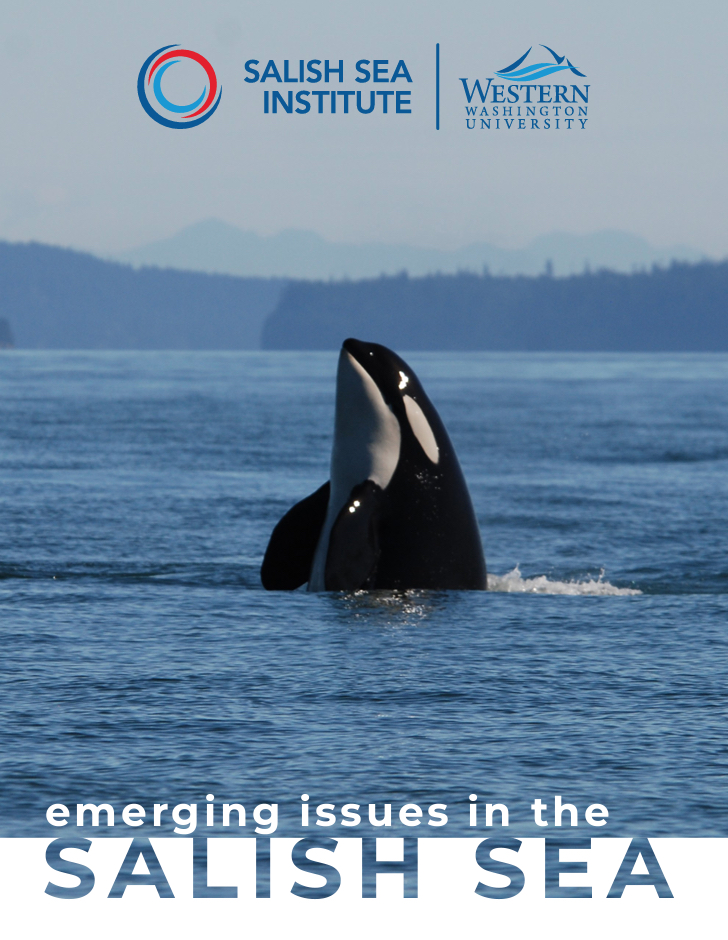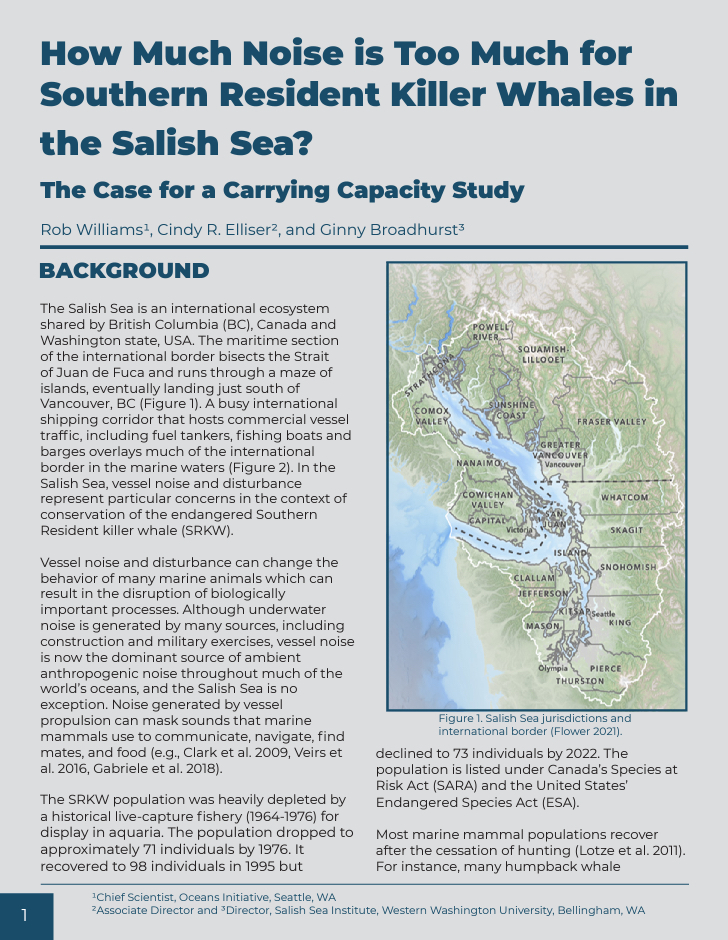

Ship noise now dominates the soundscape of the world’s oceans, and the Salish Sea is no exception. Ocean noise can mask signals that fish, marine mammals, and even invertebrates use to communicate, navigate, find mates, and search for food. There has been so much amazing work done by many scientists and researchers to measure noise in the Salish Sea and to understand the impact of that noise on Southern resident killer whales (SRKWs). But how much noise is too much? How much mitigation is enough? And how will we know?
We are pleased to share this paper written by Oceans Initiative’s Chief Scientist Dr. Rob Williams along with Dr. Cindy Elliser and Ginny Broadhurst from the Salish Sea Institute, Western Washington University. This paper focuses on the critical question: How much is too much noise for Southern resident killer whales?
The Salish Sea Institute is publishing a series of white papers intended to stimulate discussion around urgent questions and transboundary cooperation of our shared Salish Sea. Together, Oceans Initiative and Salish Sea Institute hope to convince funders and managers of the urgent need for a carrying capacity study to try to estimate how much vessel noise is acceptable to SRKWs, and how much mitigation it will take to help the whales recover. If we don’t have a shared vision of our target destination for sound seas, we’ll never get there.
